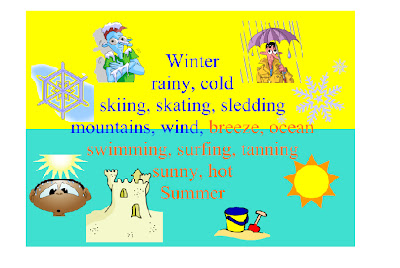Simplicity is underrated.
Today's students chat with Facebook friends all over the world, play online games with groups of people located in different states, transfer money from their savings to their checking while standing in line at a food truck, and enter movie theaters by scanning a barcode on a cyber ticket they purchased while traveling on the Metro across town. All of these activities take place through technology that was not available less than a decade ago.
Their world shrinks with the same frequency as the technology they use. The entire world has become their neighborhood. There has never been a generation that is as interconnected as this generation.
And yet, our educational system is based upon compartmentalization. We spend fifty to one hundred minutes with twenty-five to thirty students in a twenty by twenty room isolating subject matter to a single topic. We are now going to study Biology. It is now time for Geometry. This is History period. In a completely interconnected world, why do we spend so much time and effort disconnecting the subjects we teach?
This system of pigeon-holing the curriculum makes it excessively more difficult for the students of today to understand the links and overlaps in the curriculum they are exposed to. As a science educator I have noticed an alarming trend in the last few years, of students being resistant to the idea that what they learn in every classroom is pertinent across the curriculum They do not always see nor do they always understand that the math they do in algebra is the same math they will use in chemistry and physics. The grammar rules and essay patterns in English are basically the same as those used in writing a paper in biology or environmental science. The analysis and understanding of cause and effect in history is the same as the skills necessary to understand cause and effect concepts in any science subject.
How can we discontinue this disservice to our students and discover methods to incorporate the values and lessons of all subjects across our curriculum?
Simplicity is the key. We must find ways to consistently integrate cross curriculular activities into our classrooms. A very simple method I have incorporated, is the use of a poetry style called a Diamante. Students in my science classes write diamante poetry to demonstrate the interconnections and cyclical patterns of the information we teach and learn. The diamante follows a simple 1-2-3-4-3-2-1 pattern
Noun
Adjective Adjective
Participle Participle Participle
Noun Noun Noun Noun
Participle Participle Participle
Adjective Adjective
Noun
The diamante can be about any topic and can be written for any subject. It provides an opportunity to integrate English poetry into science or math, history or physical education. I ask students to take two nouns that are opposites or unrelated and create a diamante. The middle four nouns are the link between the topics. The completed diamante can be read from top to bottom or bottom to top and should still make sense.
Students then write their poems on two sheets of different color construction paper with the four linking nouns written on the seam. They then tap into their artistic side and decorate the poem and share them with their classmates.
Union
Blue Yankee
Marching Shooting Charging
Father Brother Brother Son
Yelling Fighting Attacking
Rebel Gray
Confederate
The idea is quite simple but offers an opportunity to create discussion points about the importance of understanding the integration of not only the different academic subjects but of all people, processes and things.
John Muir
"When we try to pick out anything by itself, we find it hitched to everything else in the Universe."


Tidak ada komentar:
Posting Komentar